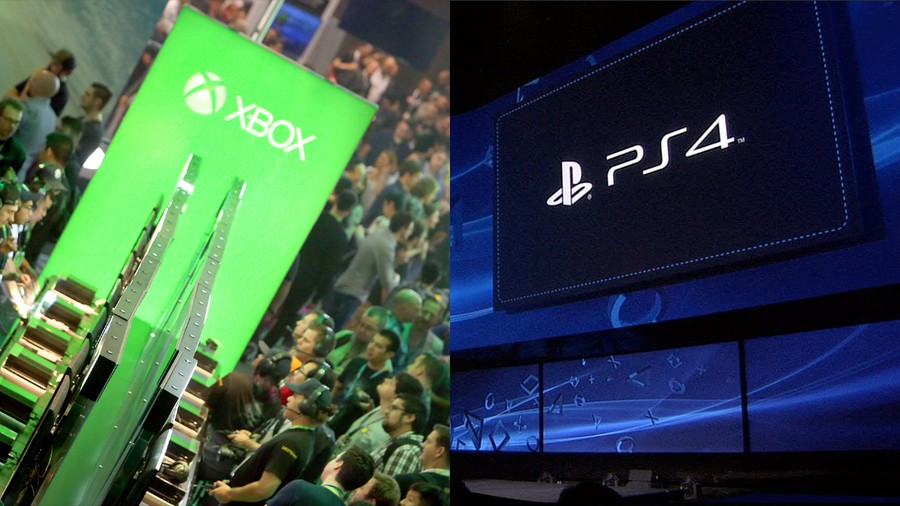
Console clashes don’t get much more competitive than the upcoming conflict between the PlayStation 4 and the Xbox One. Not since the days of derogatory SEGA commercials has a system showdown promised so much drama. But with two formats vying for your finances this fall, which device is the best choice for you?
The following text compares some of the headline differences between Sony’s system and Microsoft’s machine, and discusses the implications of those discrepancies. At the end of the day, though, it will all depend on your own personal tastes, gaming habits, and functionality requirements as to which platform fully supports your needs.
Subscribe to Push Square on YouTube166k
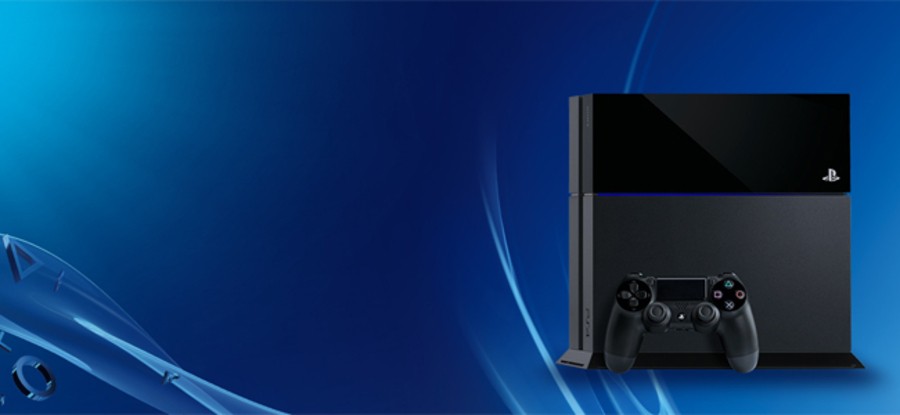
Specifications
While there are many differences between the PS4 and the Xbox One, the systems are actually relatively similar under the hood. Both units utilise 8-core x86 processors, which are supplied by AMD. However, while the CPUs are similar, Sony’s system has a slight advantage in GPU, boasting a semi-custom Radeon chip that runs at 1.8 teraflops. The Japanese giant’s console also has an advantage in memory, as it’s using 8GB GDDR5 RAM compared to the Xbox One’s 8GB DDR3. The faster format used in the PS4 – in addition to the advantages in technical grunt – are likely to give the machine the advantage when it comes to multiplatform games, though Microsoft does have 32MB of ESRAM in its box to help to allay any discrepancies. Both systems reserve a portion of RAM for operating system functions (believed to be 3GB on the Xbox One, and a comparable number on the PS4) but these figures are likely to reduce as the consoles mature.
The important thing to takeaway is that both consoles are in the same ballpark and utilise more simplistic architectures than previous machines. While the PlayStation 3 was notoriously difficult for developers to get to grips with, such issues are unlikely to haunt either the PS4 or the Xbox One. However, the slight advantages in graphics processing and RAM may result in better optimised titles on Sony’s system. And when it comes to first-party games, it’s possible that PlayStation developers such as Naughty Dog and Sony Santa Monica will have more technical grunt available than Xbox studios like Turn 10 and 343 Industries. Microsoft has talked about how cloud processing will enhance the experience on its next generation machine, but this will require an Internet connection and its benefits are refuted by some sources. Sony has also stressed that its console can use the same technology if necessary.
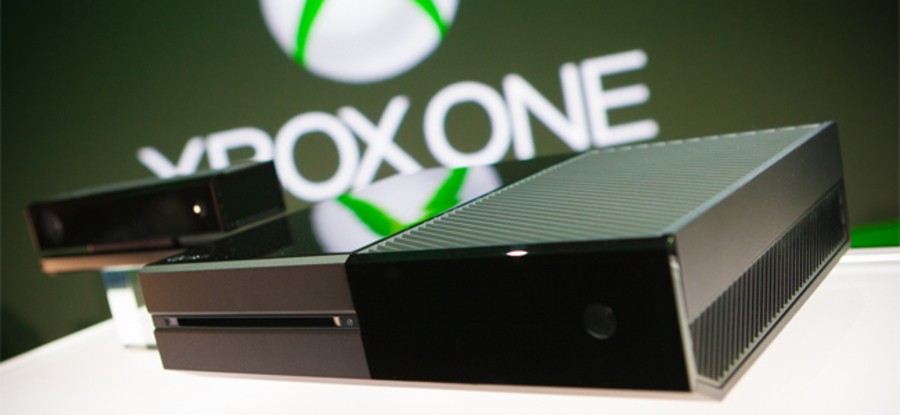
Hardware
Ultimately, personal taste will dictate your preferences regarding hardware design. Both machines boast black exteriors, and a split finish. Sony’s system has a slightly more stylised look, employing a parallelogram mould. It also has some additional flourishes, such as a blue strip and an indentation running around the entire spine of the console. The PS4 can be either stood up or laid down, though you will need to purchase a stand to do the former. Due to its bulkier size, the Xbox One cannot be placed in a vertical position. It’s also worth noting that Microsoft’s machine employs an external power brick, while the PS4 boasts all of its energy related components inside. It’s a minor difference, but you’re going to need to find somewhere to stash that additional box if you plump up for the Redmond-based manufacturer’s machine.
In terms of features, though, the systems are largely similar. Both boast a 6x Blu-ray drive capable of playing high-capacity games and movies. Each system also ships with a 500GB hard drive as standard, though the PS4’s can be upgraded to whatever capacity you like. You can attach an external hard drive to the Xbox One should you need more space. Much like the PS3, Sony’s machine also includes Bluetooth support where Microsoft’s option does not, but the next Xbox has three USB ports compared to the PS4’s two. There’s an A/V In port on the Redmond-based firm’s system, which will allow you to use the console as an alternative overlay for television, allowing you to snap in different windows such as Skype and Internet Explorer while you watch your favourite shows. This is all functionality that will be absent from Sony’s box.
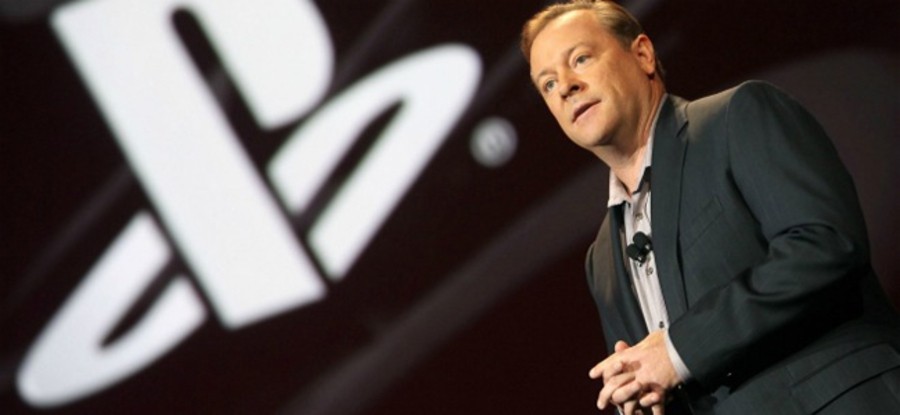
Features and Policies
While the big talking point coming out of E3 was the Xbox One’s used game restrictions, the narrative has changed somewhat since. Microsoft reversed its policies to be more in line with Sony’s, meaning that both consoles will support used, rented, or borrowed games. The systems will also be region-free, and will feature instant restart and play as you download options. The latter is designed to increase convenience, allowing you to play your games while they’re being pulled off the server. You’ll also be able to share gameplay footage on both consoles, though the PS4 will be constantly recording 15 minutes of action compared to the Xbox One’s considerably less five. Streaming will be handled by Twitch on Microsoft’s machine, whereby Sony has partnered with similar (but slightly less popular) service Ustream.
Various titles will support Smart Glass functionality on the Xbox One, which will give you additional information about your games. There will be a PlayStation App for the PS4 which will allow you to track your friends, Trophies, and more on the move, but you’ll also be able to play your entire library (minus games that make use of the PlayStation Eye camera) on the PlayStation Vita. The Japanese giant is demanding that third-party developers use the Remote Play feature, so as long as you have a Wi-Fi connection, you’ll be able to play the vast majority of your games on the handheld. In addition, both consoles will support self-publishing for independent studios, though this will not be available at launch on the Xbox One. Microsoft has also promised that budding programmers will be able to use the retail console as a development kit, but at the time of writing its plans are vague. Studios will need the appropriate hardware to work on the PS4, but Sony is reportedly loaning these out for free.
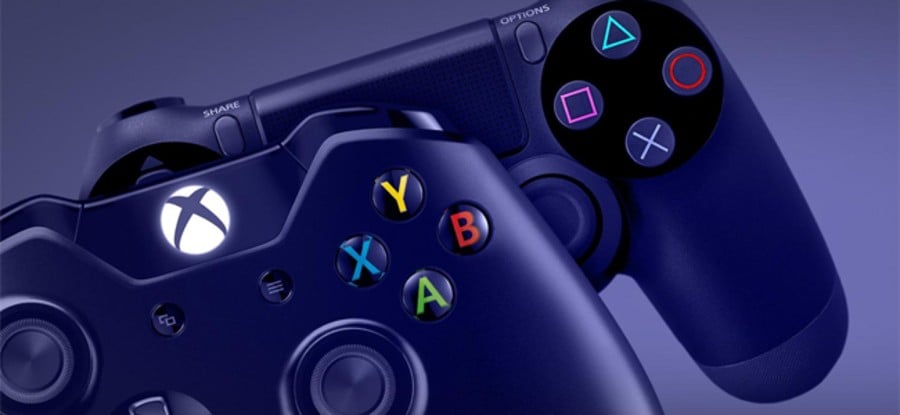
Controllers
Of the two controllers, Sony’s has seen the biggest changes over its predecessor. The DualShock 4 has been tweaked to provide added comfort, and now includes enhanced triggers and concave sticks. The input device has improved rumble and much more accurate motion sensors (similar to those found in the PlayStation Move wand), as well as a light bar on the top for identification and motion tracking (though you’ll need the PlayStation Eye to employ that feature). Sony’s peripheral also includes a touchpad in the centre of the unit which can be clicked, augmenting an additional input option for developers, and a speaker for sound effects. Meanwhile, the Xbox One controller has rumble triggers and an enhanced d-pad, but its tweaks are few and far between. You’ll need batteries or a play and charge kit to power up Microsoft’s option, while that functionality is included as standard on the PS4.
Perhaps the biggest difference between the two consoles is that the Xbox One comes with the enhanced version of the Kinect camera. This includes improved motion and voice detection, allowing you to zip around the console literally without lifting a finger. A slightly less advanced camera will be available for the PS4, but you’ll need to purchase this separately for around £45/$59. While games such as Kinect Sports Rivals will be compatible with the Microsoft device, Sony has been less forthcoming with its motion controlled experiences. A demo called the Playroom will be bundled with the PS4, demonstrating the platform’s augmented reality capabilities. Titles such as DriveClub will also use the peripheral to snap photos, which will then be used as your avatar online.
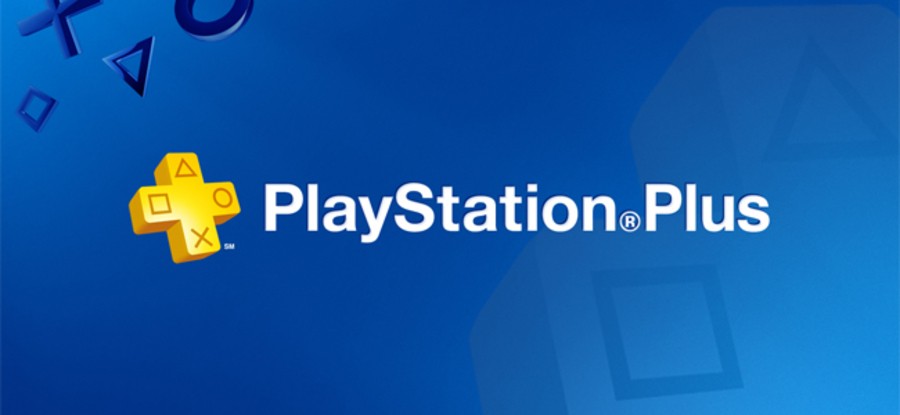
Online Subscriptions
Unlike the PS3, you will need a PlayStation Plus membership to play online on the PS4. This will cost you approximately £39/$49 for a year. As with the Xbox 360, you will need an Xbox Live subscription to play online on the Xbox One. This is slightly more expensive at £39/$59 for a year, but there are frequently discounts available. A current PlayStation Plus membership secures you free games for the PS3, Vita, and PS4, though you lose access to the content as soon as your subscription lapses. Microsoft, meanwhile, is currently giving away two games per month on Xbox Live, but it’s not clear whether this will continue on the Xbox One. The platform holder has said that it will consider furthering the policy, but has not provided any guarantees.
The biggest difference between the two membership models is that Sony has resisted the temptation to lock various services behind a paywall. You’ll be able to engage in party chat, watch Netflix, and enjoy free-to-play games without purchasing a PlayStation Plus subscription on the PS4, where Microsoft has been less forthcoming in this area, indicating that it will maintain the same policies as on the Xbox 360. As for additional online services, Sony has indicated that it will launch a Gaikai streaming solution in 2014, though the logistics of this and what it will offer remain vague. The company hopes to provide complete backward compatibility of its entire library in the future, but it’s unclear how viable this goal will be in the short-term.
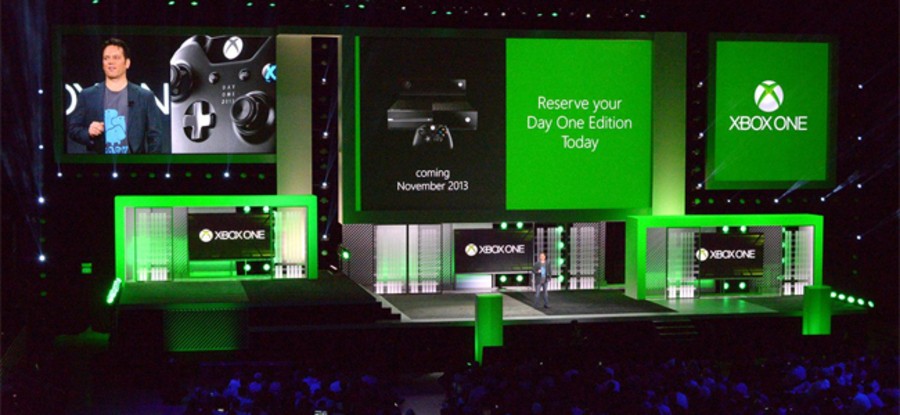
Price and Other Differences
At the time of writing, you’ll be able to purchase a PS4 for £349/$399 while the Xbox One will cost you £429/$499. As mentioned previously, Microsoft’s console will come with the Kinect camera included, but even with the price of the PlayStation Eye added, you’ll still be able to purchase Sony’s system for less. Availability and launch dates are still undecided, but the Redmond-based console is supposedly set to deploy in November while there are rumblings that the PS4 could launch a little earlier. Dates for both systems are likely to be announced at GamesCom in August.
It’s perhaps worth adding that the PS4 comes with a mono headset for in-game communication, while the Xbox One doesn’t. Microsoft says that you’ll be able to use the Kinect as a headset should you require it. You’ll also be able to pair previous generation USB-based peripherals to the PS4, as well as Pulse headsets. Any other major differences pertain to the software lineup, which spans Killzone: Shadow Fall, Knack, and DriveClub on Sony’s machine. The big launch titles for Microsoft’s console include Dead Rising 3, Forza Motorsport 5, Ryse: Son of Rome, and Killer Instinct. Both systems will host a slew of multiplatform games, such as Watch Dogs, Battlefield 4, and Call of Duty: Ghosts.
Which console will you be purchasing at launch? Which of the aforementioned differences mean the most you? Let us know in the comments section below.
Will you be buying a PS4 or an Xbox One? (94 votes)
- PS4
- Xbox One
- Neither
- Both
Please login to vote in this poll.





Comments 42
I'm getting the PS4 only out of the two, but shouldn't there be an option for both?
One word. Exclusives. I really believe Sony destroyed Microsoft in this area (unless you only play first person shooters).
Also, the ps4 doesn't have an a/v spot? That actually seems a little bit like a missed opportunity. I wonder what the reasoning was? Space? Cost? I can't imagine it would be that expensive.
Infamous: Second Son alone is better than any MS exclusive i've seen. I've always enjoyed Infamous games, but Second Son looks like its on a whole other level. Cant wait.
@Jaz007 There should, yes. I thought that earlier, and then forgot! I've added that option in now — apologies to anyone that's already voted.
i'm getting both that's for sure just not a launch i'm waiting till FFXV is out to get my PS4 and Halo 5 is out to get a XB1
last gen I was all over the 360 (even though I owned both).
next gen im going to be all over PS4 & Vita purely for remote play.
@DirectAim That's probably my most anticipated feature, too. Hope it works as promised - I'm really looking forward to playing stuff like Killzone in bed!
I am getting the PS4 at launch. There was no "wow" factor for me with the XBone and most of the games that I would want to play are rumored to me timed exclusives or I could just play them on a PC. Other than that the only game that I got excited for was Killer Instinct which sounded cool at first until I saw it in action and it just looks like Street Fighter IV with Killer Instinct fighters instead of a modern Killer Instinct game so whats that point?...lol
I think PS4, but Xbox One does look great too. $100 difference is for the camera, but also PS4 is missing some ports the Xbox One has, like AV output isn't present in PS4, you would actually have to have a hdmi enabled tv.
I owned an Xbox. It barely got used. I own a 360. It barely gets used.
I'll be getting a PS4 at launch (providing my ShopTo pre-order from February translates into a launch-day system), and I'm not at all interested in the XBone. Never say never, but it's unlikely.
Even if I were interested in XBone, I don't think I'd get one at launch. Given today's news that MS are clocking the GPU at a higher clock speed than initially specified, so soon before release, I'd be concerned about a dose of next-gen RROD and wait a while - especially as there have already been reports of low chip yields at the old specs.
So PS+ is £39/$49 and XBOX live £39/$59 ? Is that correct or typo ?
@hamster666 I struggled to find RRP prices for UK (because everything is always discounted here), but those are accurate as far as I can tell.
Definitely PS4. I just hope the rumored release date of December 13th isn't correct! Come on Sony! Don't make me wait that long!
@hamster666 yup, you'd be correct! kinda weird how we have to pay $10 more for XBLA, but that's Microsoft for u
I don't see why anyone would want an Xbox One, or even a 360 for that matter. Sure, they have some great exclusives, but you're paying a good bit more for significantly less.
@ObviouslyAdachi For the exclusives, of course. I owned a PS1 and PS2 and loved them, but I got a 360 because I didn't want to wait a year for the PS3. I couldn't afford 2 game systems plus games, so I stayed with the 360 and didn't regret it.
I will get a PS4, though. The system seems very well done and the games and exclusives so far look awesome. Plus, especially after the NSA- and Prism-scandal I'd never get an X1 before MS makes connecting Kinect optional.
@ztpayne7 I think they must assume if you can afford a ps4, that you have a hd tv already. maybe
@ObviouslyAdachi: For me it was the price. I owned a PS and PS2 but when it came down to PS3/360 I went with the 360 cause a majority of the games that I wanted to play were on both systems. The PS3 was so ridiculously priced that I went with the 360 instead.
With that being said I already have my PS4 paid off.
In my opinion the Xbox one is just hideous. It's big, heavy, and plain looking. I used to actually like the design of the 360, it made it more desireable but PS4 has Xbox One beat in this area alone. Infact if you put the two consoles side by side to the general public I think people would just gravitate to PS4 based on looks alone.
Second I like the potential of PS4's controller. While Xbox One's is more of an upgrade to the 360, PS4's controller offers new possibilities with the clickable touch pad.
Finally, the Kinect just creeps me out. Again the design of Kinect is hideous and actually quiet intimidating. To be perfectly honest the Kinect single handily turned me off. Collecting data, always on, always watching, is just creepy. Then with all the Microsoft rumors of providing data to NSA I'm just not willing to risk it. Not that I have anything to hide but you just never know. I understand that voice commands and hand signals are their biggest selling point but I'm really not interested at all and could care less. Gaming is meant to be a relaxing experience but how can you relax if your yelling at your screen swinging your arms around and hitting someone by accident? lol Yeah I'll take a pass on the Kinect.
lolpollresults
PS4 for sure. But not launch day, waiting for more titles that appeal to me (at the moment really interested in inFamous: Second Son and ACIV: Black Flag; with Mass Effect 4 coming out, I'm really psyched). Even if PS4 was slightly less powerful, I'm a sort of turning into a Sony fanboy.
Firstly off-topic: but i can't seem to access the forums i have been banned for "Spamming"?
On topic: PS4, its not a question of if but when?
@get2sammyb hey sammy. Not the place for this I suppose, but it was here or twitter.
I'm apparently banned from the forums for spamming. I haven't used them much for a while before today and didn't even post anything. I emailed Anthony as the message suggested-but I'm a little confused as to what I'm meant to have done.
@KALofKRYPTON Worry not, you're not banned. I appear to have messed something up.
@get2sammyb ah, no bother.
@KALofKRYPTON Could you see if it's working now, please. Sorry again.
@get2sammyb all good now, thanks Sammy
@KALofKRYPTON I'm really sorry about that.
Teh banshtick!
@get2sammyb no worries man.
The difference will be in first party exclusives which will be great from both companies. I'm not sure I want to buy an X1 or not that. I figure at some point I will to play the new Halo games but I just have this terrible feeling that the day after I get one MS will go back to its original, idiotic plans.
@hydeks
To be fair, people have paid the price for XBL for a long time now and until the last couple years it was a vastly better service than what either Sony or Nintendo were offering. I think Sony has definitely caught and is well on its way to surpassing Live with the Plus service and Nintendo is making great strides considering it took so long to really embrace online. But you can't blame MS for still charging more if people are still willing to pay.
@ztpayne7 Having to develop features around that HDMI in would have added to cost for sure not to mention the added parts. Besides its a lackluster feature IMHO. I'm more excited to get the X1 from Comcast which has two HDMI in ports etc.. I can do all the TV watching and input switching I want through that.
@-CraZed- it's "lackluster" because you probably own an hd tv. I would say there's still quite a few people who don't have an hd tv.
And for example, I own one, but my parents back home don't. I usually take my ps3 home when I go (partly for Netflix), because i own an hdmi and an a/v, but I wouldn't be able to do that for the ps4.
@ztpayne7 Apologies but I must have read your post wrong (its after 1230am) I thought you meant the HDMI in port the XB1 is sporting... That is the "lackluster" feature I was referring to. As for a standard RCA jack video out, it is about time that the consoles move away from that... HDTVs can be had for cheap these days and there are more console owners with HDTVs than without...if the reverse were true I'd say yeah they needed to include one but that is not the case.
Also but correct me if I'm wrong but isn't the XB1 without a old school RCA hookup as well?
@-CraZed- I'm just going by Sammy's article. He states under hardware that there's an a/v port on Redmond's machine, but this functionality is absent from sony's.
@ztpayne7 I'm talking about the input in that area. There's an A/V In port on the Xbox One. This lets you plug in your cable box, and watch TV through the Xbox One. You can't do that on PS4.
Have edited the text in the article slightly for clarification.
@get2sammyb @ztpayne7 Yeah that port is an HDMI in. There are no legacy ports on either of the next gen systems...
If PS4 supported PS3 game backward compatability, I would already have one pre-ordered.
Instead I'm choosing to wait at least 12 months post-launch and see what happens, getting both a PS3 on launch day and a PS Vita shortly after launch has taught me the benefits of hindsight when it comes to commiting early to a new console.
I have a substantial backlog of PS3 games to keep me going plus there are still some games worth staying with my PS3 for on the horizon, e.g. GTAV, XCOM Declassified.
Probably will end up getting a PS4 eventually, I have always preferred Sony's consoles.
For now I'm in no rush and am happy to sit and wait see what happens...
Most definitely buying both, though while I have the PS4 pre ordered, the Xbox One will have to wait until the price drops $100 or so. I'm the kind of gamer that wants all the consoles, because I don't want to miss out on any games. It's gonna be PS4, Wii U, Xbox One, Vita, and 3DS for me this gen, with the PC for occasional fan games like Mega Man Unlimited.
@ztpayne7 They are forcing you to use HDMI because it delivers the best picture quality. AV output is useless with HD TV's.
Xbox One have a few Exclusive that look promising, but they will most likely come to PS4 soon, so gonna get PS4 only.
Show Comments
Leave A Comment
Hold on there, you need to login to post a comment...